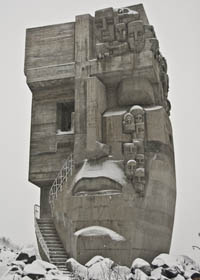|
The days after the Soviet Union
|
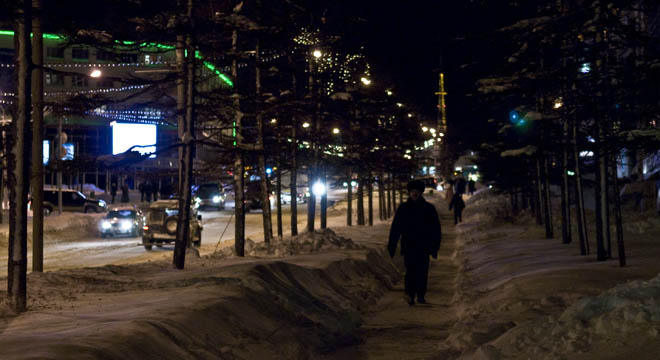
Turbulent days under Yeltsin
Things were on their last legs when President Yeltsin took over in 1991 after the Soviet Union finally collapsed. He did not have much experience of how to establish a market economy. In any case, his initiatives were blocked through political infighting with the old communists. Those reforms which were made were often counteracted or had negative repercussions as a result of unscrupulous individuals who used the system for their own betterment.
The consequences were particularly hard in the peripheral regions. The new economy sometimes resulted in a modicum of progress in the larger cities where the new rich put their winnings into circulation but in Magadan there was nothing new to spend. Gold prices were very low at the time. They had gone down from 600 US dollars in 1980 to 300 dollars at the end of the 1990s.
When I was there in 1996 and 1997, Kolyma looked virtually like a war zone. There was garbage all over the place in Magadan, the villages were suffering from severe poverty and ordinary citizens looked like criminals. Many of the villages were deserted and, in just a few years, the population more than halved across the entire region. Only a few gold diggers journeyed to Kolyma hoping to make their fortune digging gold in the summer, spending spring and autumn in Moscow and the winter in Sochi on the Black Sea. It might sound attractive but it was a hard life.
Stabilisation and the Putin period
People continue to move out of the villages in the north. A village like Elgen - which used to be fairly big and gained fame through Yevgenia Ginzburg who was a prisoner there for some considerable time – finally closed down in January 2008 when the last mayor left for good. There is now only a single farmer left together with a few hunters and gold diggers. Things look the same everywhere.
Many decide to move to the closest town. Those from Elgen have moved to Yagodnoe. But many have also moved on from there too. There used to be three schools in Yagodnoe, one with a dormitory for children from the isolated gold posts. But now there are no longer any of these posts. That explains why the boarding school was the first to close. One of the other two schools has been modernized and might be the only one left in a few years’ time as the other one is expected to close too.
The city of Magadan has grown a little from about 90,000 inhabitants in 1996 to about 105,000 in 2007. The growth can be ascribed to people arriving from the north rather than from other regions in Russia. There’s still quite a way to go to reach the 152,000 who used to live there in 1989.
The gold mines are doing well again. The price of gold rose above 600 US dollars in 2007 and now (February 2008) is approaching 900 dollars per ounce. But they complain about the oil prices. The Neksikan mine near Susuman produces 500 to 550 kg of gold per year but uses over 5,000 tons of fuel. Obviously, oil at that price eats into the profits.
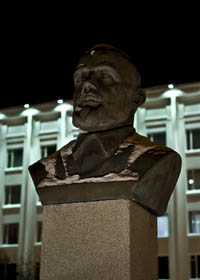
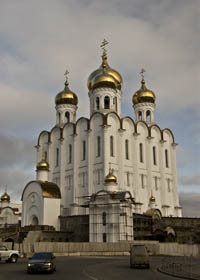
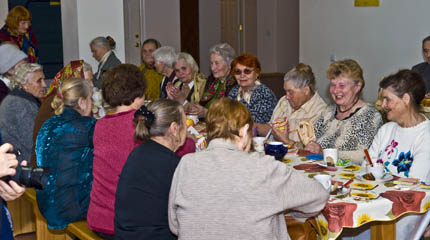
Do they do anything for veterans in Russia? Yes, those in the party have double the normal pension. President Putin has given big increases to war veterans, including NKVD officials. For me, it’s as logical as giving extra high pensions to members of the SS in Germany. It is nothing less than scandalous.
By contrast, there is no national support for former prisoners apart from President Yeltsin’s arrangement allowing rehabilitated prisoners to be moved up the housing queue. Some of the regions help a little, but certainly not all. In Magadan they give them an extra pension of 1,000 roubles (30 euros) a month. It doesn’t sound much but it goes a long way in Magadan.
Memorial and Solzhenitsyn’s foundation also provide a little for the old prisoners. It goes towards medical treatment, support for pensioners, and so on, but it is a very small amount, especially payments from Memorial which is suffering from the fact that they are no longer allowed to receive funds from abroad. Funding from inside Russia is dwindling too as people are afraid of what the consequences might be if the Kremlin were to find out they were supporting a democratic movement.
There are still many who do not know the fate of their relatives and who are trying to obtain information about them. Those known for writing about the Gulag constantly receive letters of despair asking whether they can help to find out what has happened to members of their family. But KGB Colonel Putin has closed many of the archives Yeltsin had opened. It is therefore blasphemy when President Putin says it is important to remember the Gulag. If he really meant it, he could act accordingly.
The history of the Gulag will soon be over. The remaining survivors are now old - in a country where life expectancy is low. There will of course always be those who manage to reach a fine old age but so few that their stories will hardly be representative. So it is NOW we need to make one last valiant effort to interview those who can still fill in the missing details!
